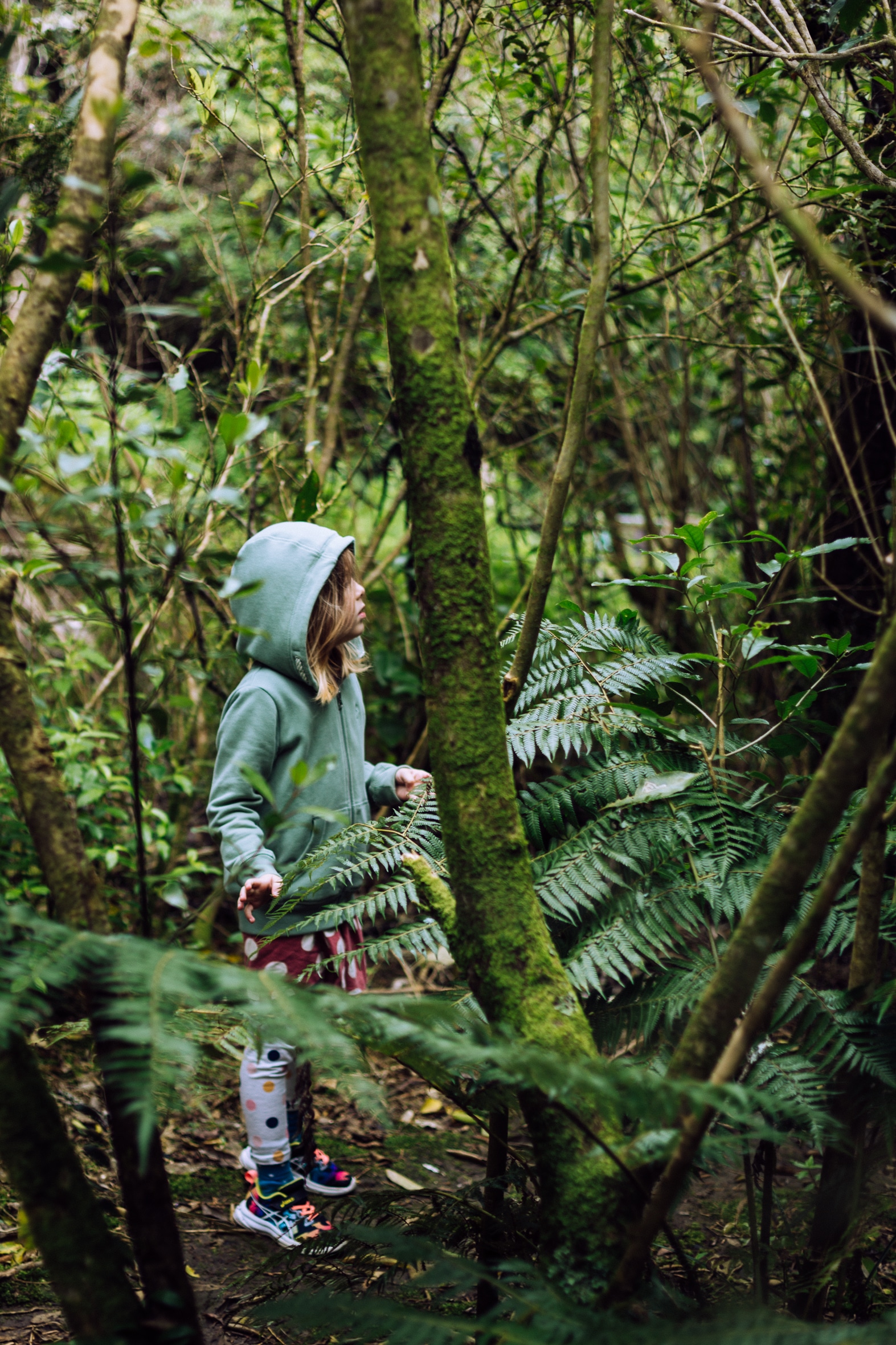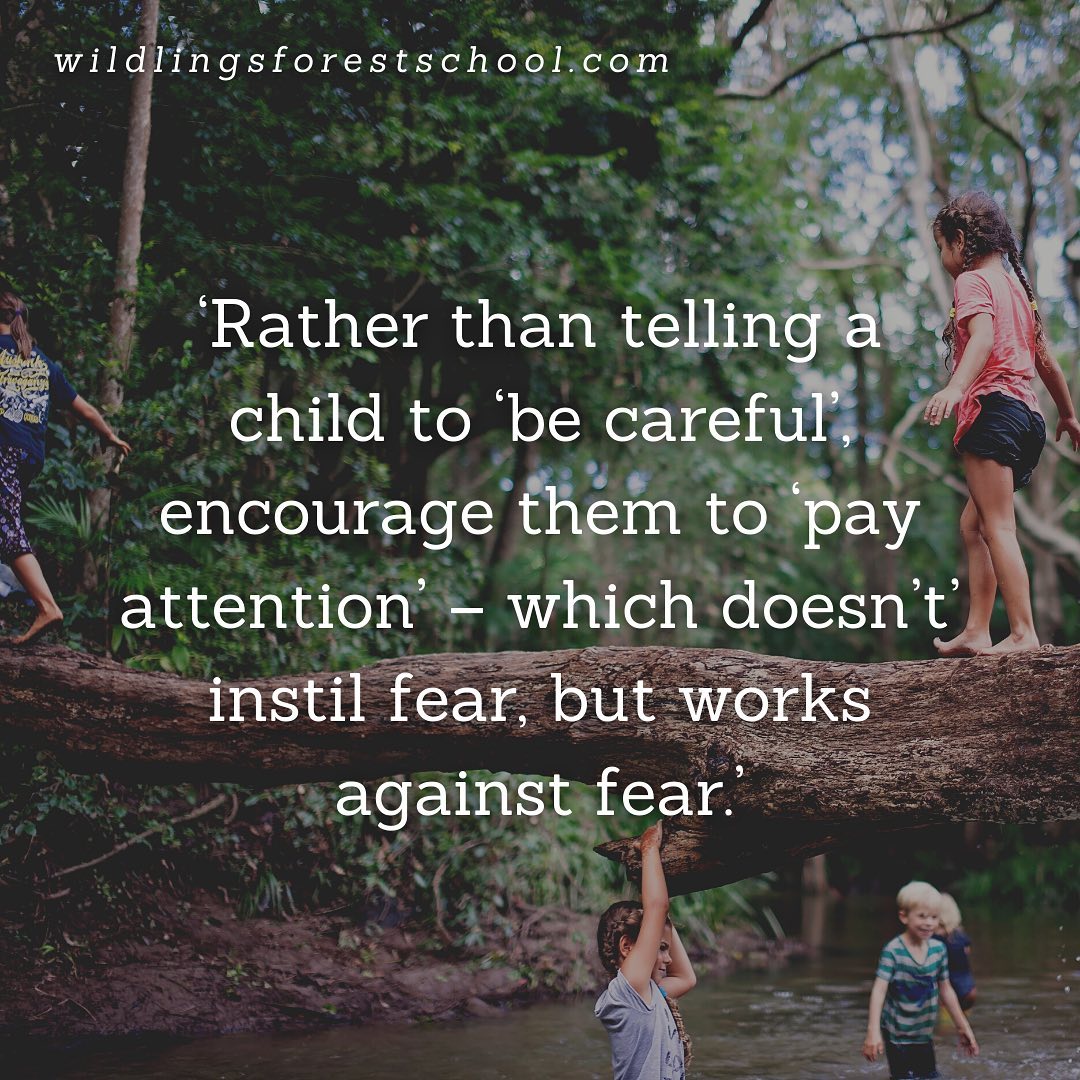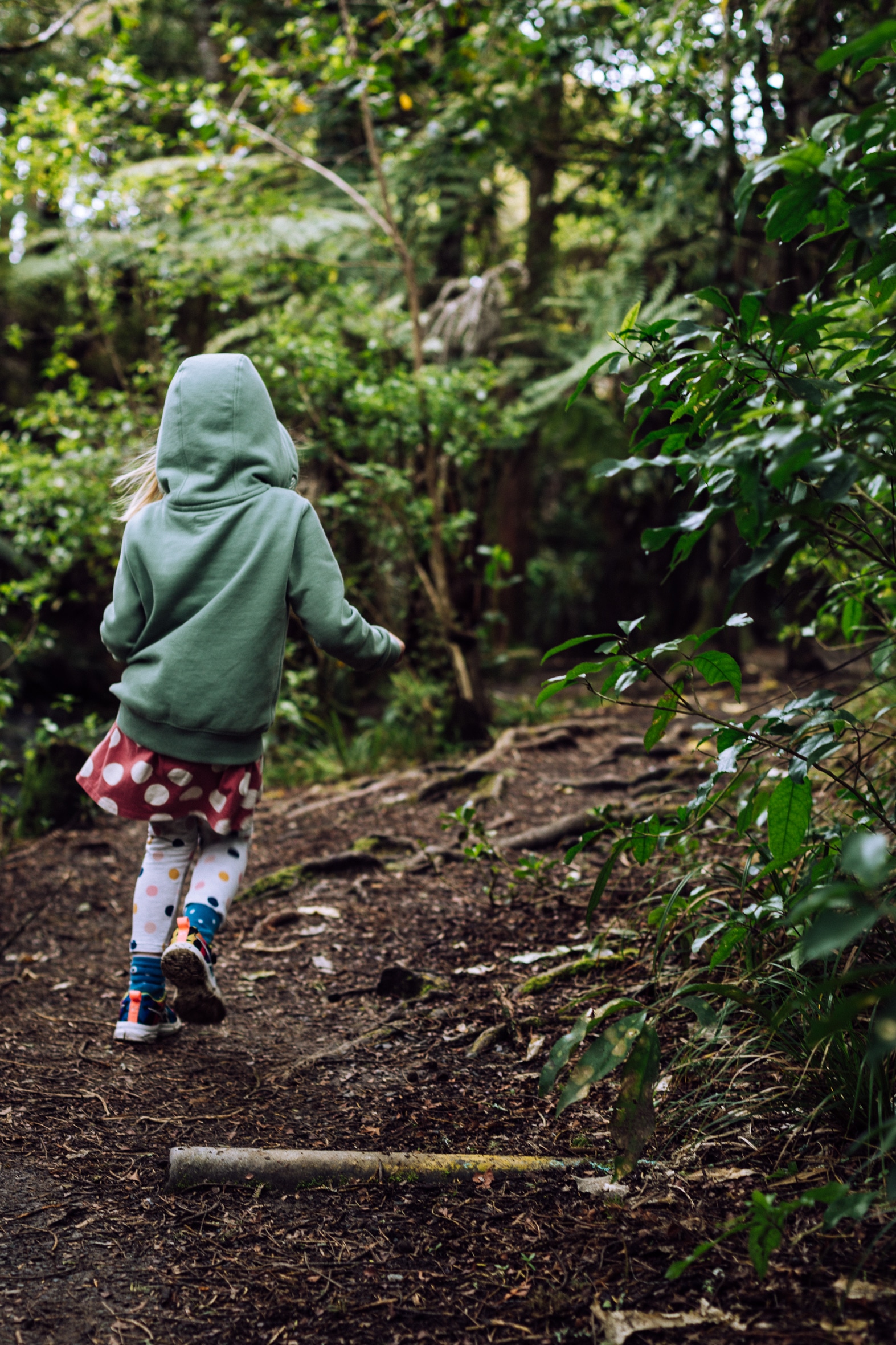For me, it has taken on a bit more of a specific meaning, which ultimately I hope is going to translate back into a more general ability to cope with the challenges that life can, does and will throw at them as they grow.
Specifically, I want to develop my kid’s ability to deal with discomfort in the outdoors. The ability (and therefore confidence) to be ‘resilient to walking distances, getting wet, cold and a little uncomfortable.
The Urban/Rural ‘divide’ is most apparent to me when it comes to the kids, and the ability for them to regularly get out in the ‘wilderness’ – not just outside, not just playgrounds – but specifically the slightly wilder, less organised places on the edges of parks where a structure isn’t as evident. I.e. ‘the bush’.
Richard Louv’s ‘Last Child in the Woods’ – was the beginning of (for me at least) the rewilding movement that has grown and grown in recent years. Nature-Deficit Disorder is what he calls it – the separation of kids from the wild and the over structure and management that even organised sports, neatly square playgrounds and organised events can bring.
No. Kids days do not need to ‘harden up’.
Oh, and if they do, who created the environment that created them?
This is something I want to address right from the start. I am sure when you were a kid you had to walk, barefoot through the snow without shoes, no jumper and your father beat you daily and you turned out fine. Well, except you condone violence towards children. Apart from that.
Kids these days, particular right now, have to deal with a world much more complex and challenging than ever before. The irony is, of course than by any measurable standard – it is the safest time in the history of man to be alive.
Certainly, current COVID times put this theory to the test. But – we are not actually back at Black Plague days, and while some WOKETIVISTS might disagree – prejudice and persecution of minorities are also at an all-time low. This is not to say we can’t and shouldn’t work to decrease it even more. But most of us, living in modern societies are better off than we have ever been.
However, the irony of this, is we have created such a comfortable world, for many kids, which also means they never get to experience physical discomfort. Which, I feel, has some negative repercussions as well. To be clear, I am not talking about major, traumatic, painful experiences, but simply, physical discomfort, challenges, testing.
Take a step back and just watch sometimes – leaving a house with the kids – many parents will want to bundle the kids up – ‘do you have a jacket’ – ‘are you cold’ and many variations. These days. I try let my kids get cold. But that isn’t to say they don’t have a jacket packed in their pack. It’s just now their responsibility to thermoregulate. Talking of which…
Kids and Thermoregulation
There is a bit of a thought/theory/myth that kids are not able to thermoregulate – meaning – they don’t know if they are hot or cold and therefore can’t be trusted to look after themselves.
Well. That is true. For babies. At around 2 years of age, kids do become capable of judging their own temperatures and, doing something about it. If your kid is cold – they will let you know – if they are hot – they will start taking stuff off and throwing it away.
So. My kids can tell me if they are hot or cold. It’s no longer a case of asking them, or telling them to put on a jacket – it’s about educating them why they should pack a jacket – just in case they get cold later. Maybe they won’t use it – that’s fine. But they can go and get a hoodie to put in the pack, just in case. Even if it is nice out – but that now also feeds into planning and risk management.

Managing Risk
Now. This is, for the parents, a lot about managing risk. It is something I have struggled with – with a background in Health & Safety, with a mother who was an OSH/Dept of Labour/Worksafe Inspector for most of my life – I got a little risk-averse – because in an industrial setting – risky could mean several injury or death. A kid climbing up a ladder is not in the same space, and, a kid learning to take, and therefore manage risk is critical to their long term ability to find their limitations and push them, safely, not recklessly. To me, not understanding risk is more of an issue than taking little bites of risk.
I would catch myself lifting my kids up ladders instead of letting them learn how to get up themselves. I would be standing there, spotting my kid while they climbed up anything – and I still do – I have just learnt to take a step back and point out to them that, while I might catch them if they fall (of course I will) – I am not coming up to get them – so it makes sense for them not to climb any higher than they can get back down from. That’s the rule now – don’t climb higher than you can get back down from.
The wording is very important here as well – I have replaced saying ‘be careful with ‘focus’ – I am teaching them they can do anything (within reason) if they focus, pay attention and correctly evaluate risk.

Getting Out
When the kids were young young, my partner (then) and I had all the intentions to get the kids out and about as much as possible. Then. Life kinda got in the way. Oh. And tantrums – lots of tantrums. I ended up with kids that simply refused to walk more than 100 meters and then wanted to be carried.
Thankfully, they don’t demand to be carried constantly anymore (my back might be permanently ruined) – but – I had to start making a conscious effort to get out more with them in tow.
Ironically, this has become as much about me getting out more as it was them – it’s a realisation, sadly, that my exercise levels have taken a dive over the two lockdowns, and it’s a gradual process to get the fitness, and therefore energy levels back up to the point where I actually want to head out. Just throwing on a heavy pack for a ruck is likely to cause more harm than good right at the moment – so it’s lots of small, short, frequent walks – which as it turns out – are perfect for the kids as well!
So. Let them get cold. Let them get wet.
For me, the first step is kinda easy. Don’t force them to put a jumper on – let them decide when they want too. To be blunt – they know better than you anyhow (it’s their body) and – most kids seem to be a mini-furnace anyhow. Combine that with a little exercise (remember, they need to take nearly twice the amount of steps you do) and they are likely not cold. When you stop, explain why you might be putting another layer on, and, when you start off again, why you are taking yours back off. Lead/model by example rather than by command.
We also walk through steams. The reality is, wet feet are fine. We are not talking about a week long expedition in the Borneo Jungle where Foot Rot is a valid concern. If their feet and socks get wet – so what?
Back to Managing Risk (again)
Of course – I always have a spare set of insulation, socks and some snacks in a dry bag in my pack – no matter the length of trip – and – in the context of this article – I am only talking about mini adventures where you are likely only and hour from the vehicle anyhow. I have blankets, snacks, all manner of things in there. The kids are not going hypothermic during a simple day walk at the local park.
When we move onto multi day trips, with longer walks – sure – I am going to start explaining why keeping your feet dry, rotating socks etc can be useful. By getting dirty shoes, for most of us parents, is about ourselves, not the kids. Let them be kids – get dirty, wet, and a little cold.


